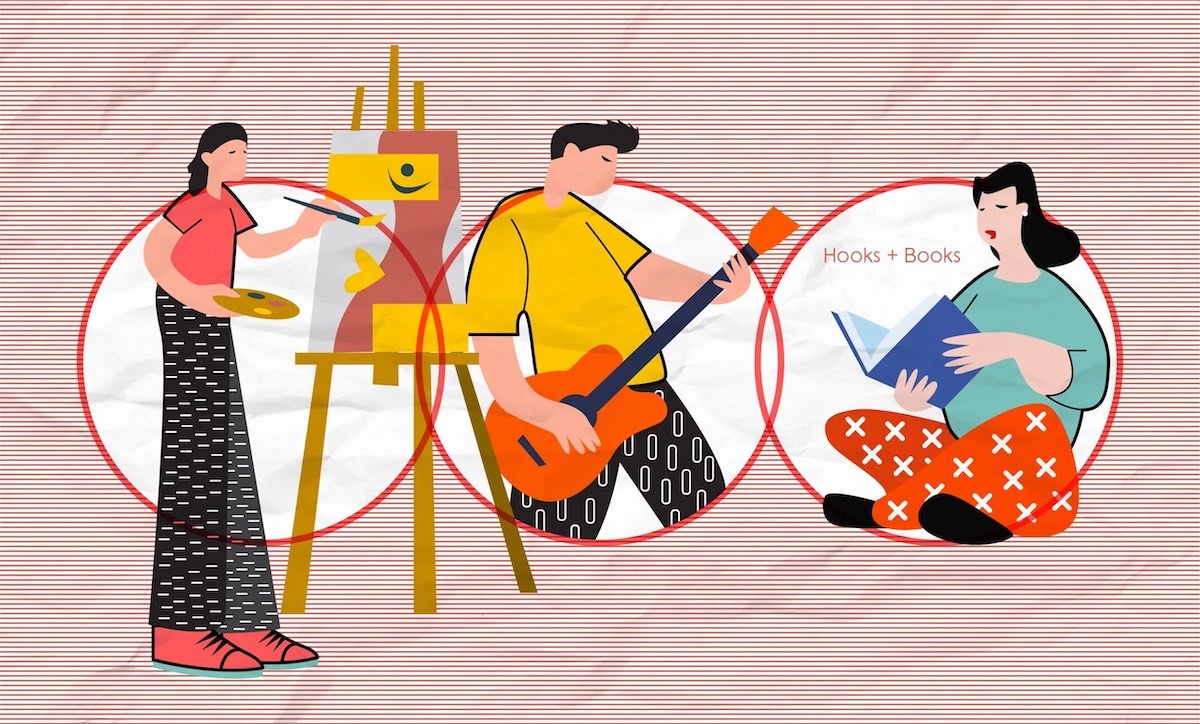‘Hoy, Pinoy ako!’

Many Filipinos, who are born and raised locally, are familiar with the catchphrase “Hoy, Pinoy ako!” sang by the prominent artist Bamboo.
This evolved into a pop culture phenomenon that, for as long as I can remember, has been played repeatedly, whether I like it or not, in local malls, restaurants, TV commercials, and public transport. But when one hears a phrase repeatedly, one can also lose track of its meaning. So, what did Bamboo even mean as he shouted angrily into the microphone?
Because this catchphrase became ingrained in Filipino culture, it reminds me of my first experiences of embracing our traditions. Since I was young, my earliest memory of being close to this culture is my parents reprimanding me for not saying “po and opo” to my elders, followed by asking their hand for a “mano po.” This gesture, at that time, was new to me. It was like a door opening to this brand-new world of gestures and etiquettes, and as a child, having a knack for pleasing people, willingly extended my respects to my elders.
It’s often said that you can tell if someone is Filipino because their food is either salty or sweet. I grew up in a household built on a solid foundation of this true Filipino culture.
We delightfully cook and prepare meals such as adobo, sinigang, and lumpia, and on afternoons, we snack on sugary meryenda. Being family-oriented, we would join together at the table, eating the dishes prepared for us, indulging in different kinds of taste and texture exploding in our mouths that even though we eat this every day, we never tire of it. This joyful dining experience is courtesy of the greatest chef I have ever known—my mother.
Other than the small pleasure of eating as a family, we have this routine of praying the rosary every single day—chanting the prayers by the book, and on Sundays, visiting the church where my parents exchanged vows as a young couple in their 20s. This religious practice has become routine.
Filipinos are known for their communal attitudes. Local events are not to be taken lightly—expect that there will be bountiful servings of homemade dishes during “handaan” or birthdays, and loud karaoke to burden the neighbors with out-of-tune singing. Festivals are planned months ahead, with parades, marching bands, concerts, and performers week-round to entertain the townspeople. This just proves Filipinos’ hospitable nature.
We also take Christmas seriously. This, by far, is my favorite cultural phenomenon of the year. Early in the “’Ber” months, you can already see houses adorned with fairy lights and parols. Christmas trees are hung and designed with ornaments as early as September, and people shop nonstop until December for gift-giving. These months are the busiest of all—traffic is unavoidable, and swarms of people fill the malls. But once the holidays are over, one can be filled with loneliness, counting down the months before festivities begin again.
Meanwhile, my fondest memory of school events is field trips. Nothing can stop the enjoyment of waking up as early as 4 a.m. to pack snacks and the fear of being left behind by the bus. Of all the landmarks we went to over the years, my favorite by far is the National Museum and Intramuros. I got a glimpse of our history and the architecture in these places.
These educational trips as a student helped me understand the Spanish colonial period and how historical events shaped our culture. Catholicism, ideals, foods, clothing, language, politics, and many more were influenced by our colonizers.
In today’s digital age, with the overexposure of Western and Asian cultures on the internet, it’s so easy for us to adapt to their ways. I’m guilty of speaking in English more than Tagalog. I admit that I watch Korean dramas more, listen to American pop singers obsessively, and buy imported products rather than support locally made ones.
But through and through, my blood runs thick as a Filipino. Who I become today is the product of culture passed down from a generation built by our ancestors. The practices I carry were first taught to me by my family and teachers who guided me through the years. This is my country. These are my people.
No matter how much foreign ideals are romanticized, I’ll shout as much as Bamboo at his concerts, proudly saying in their faces, “Hoy, Pinoy ako!”
—————-
Chynna S. Ong, 21, is a marketing student at the Polytechnic University of the Philippines. She is a food enthusiast and a dog lover.

















